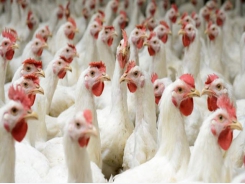Using classic poultry nutrition against coccidiosis

The entire feed, not just the additives, is a valuable tool to prevent or solve problems.
As anti-coccidial drugs become ineffective or banned in poultry production, alternatives are needed. In fact, the need to address the problem of coccidiosis in litter-raised poultry is so severe that almost all kinds of additives are being tested against this perennial problem. Most efforts are met with minimal to no results, but the trials continue as coccidiosis has no real solution other than medication.
It is interesting to realize that this problem existed decades ago, and nutritionists were even then agonizing how to address it successfully. Back then, feed additives were still part of the future — at least in the degree we encounter them today — so nutritionists experimented with nutrition.
Nutrients can have many functional properties that will help to prevent or at least alleviate certain problems.
A classic poultry nutrition book, “Nutrition of the Chicken” by Scott, Nesheim and Young, published in 1976, indicates that chicken infected with coccidia benefited from as much as 10 times higher levels of vitamin A and/or up to eight times higher levels of vitamin K. This information alone should be sufficient to trigger many vitamin suppliers into action testing supra-nutritional levels of many or all vitamins under coccidia infection.
In addition, it is mentioned that low-protein diets proved better for infected poultry compared to normal diets. If this still holds true, we can see a future for adding extra feed-grade amino acids. Interestingly, they noted that coccidia require trypsin (an enzyme) to thrive. Raw soybeans contain trypsin inhibitor activity compounds, which, under normal conditions, reduce animal growth. But what if these animals are infected with coccidia to begin with?
Feed additives are one of the tools nutritionists can use to solve problems. Lamentably, we keep forgetting that the rest of the feed is also a valuable tool in many situations. Nutrients can have many functional properties that will help to prevent or at least alleviate certain problems. Animal feed should be evaluated as a whole, and not merely as a vehicle for additives.
Có thể bạn quan tâm
Phần mềm

Phối trộn thức ăn chăn nuôi

Pha dung dịch thủy canh

Định mức cho tôm ăn

Phối trộn phân bón NPK

Xác định tỷ lệ tôm sống

Chuyển đổi đơn vị phân bón

Xác định công suất sục khí

Chuyển đổi đơn vị tôm

Tính diện tích nhà kính

Tính thể tích ao hồ




 Whole grains in broiler diets may boost feed…
Whole grains in broiler diets may boost feed…  Broiler post-hatch super pre-starter boosts performance
Broiler post-hatch super pre-starter boosts performance